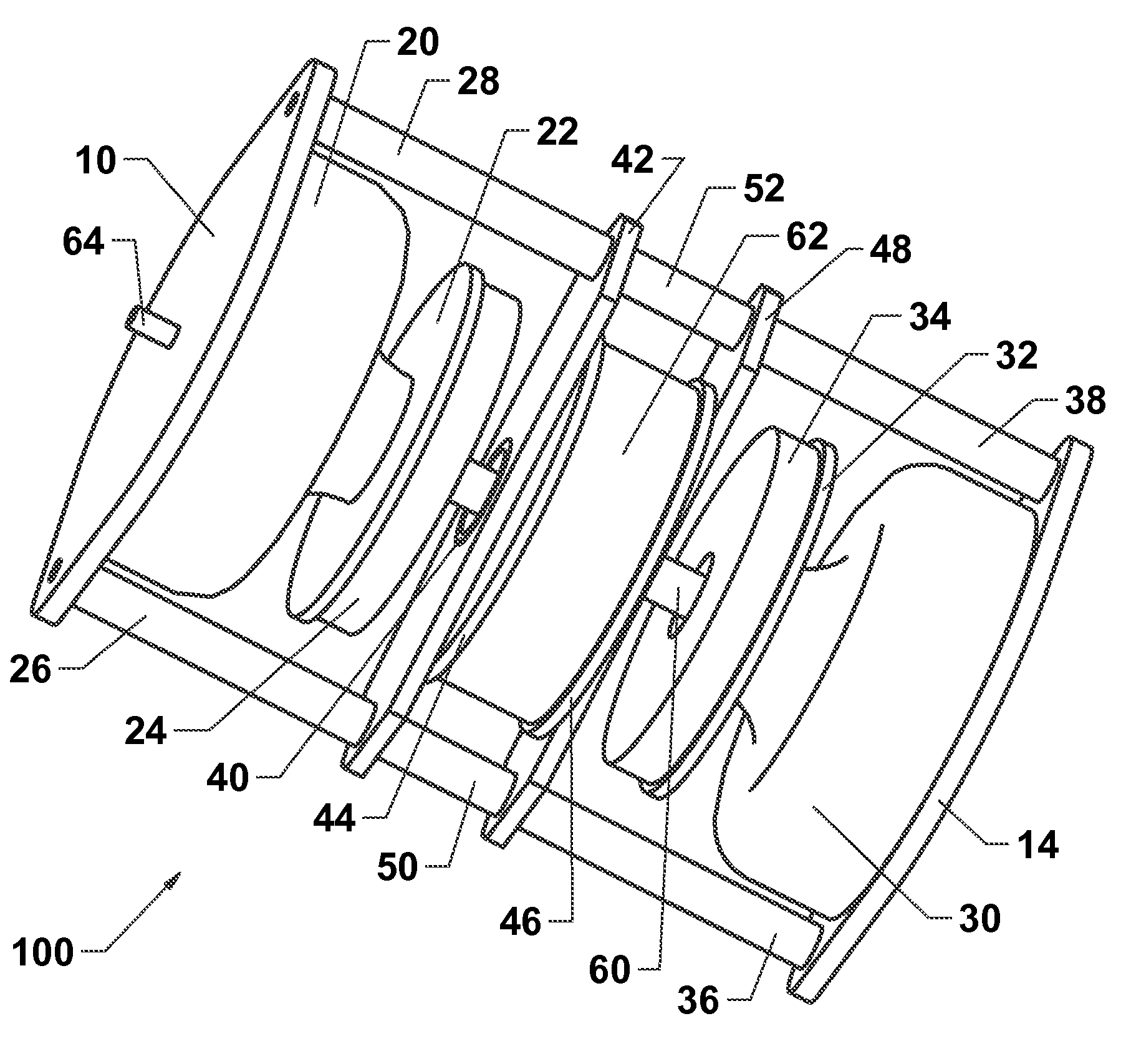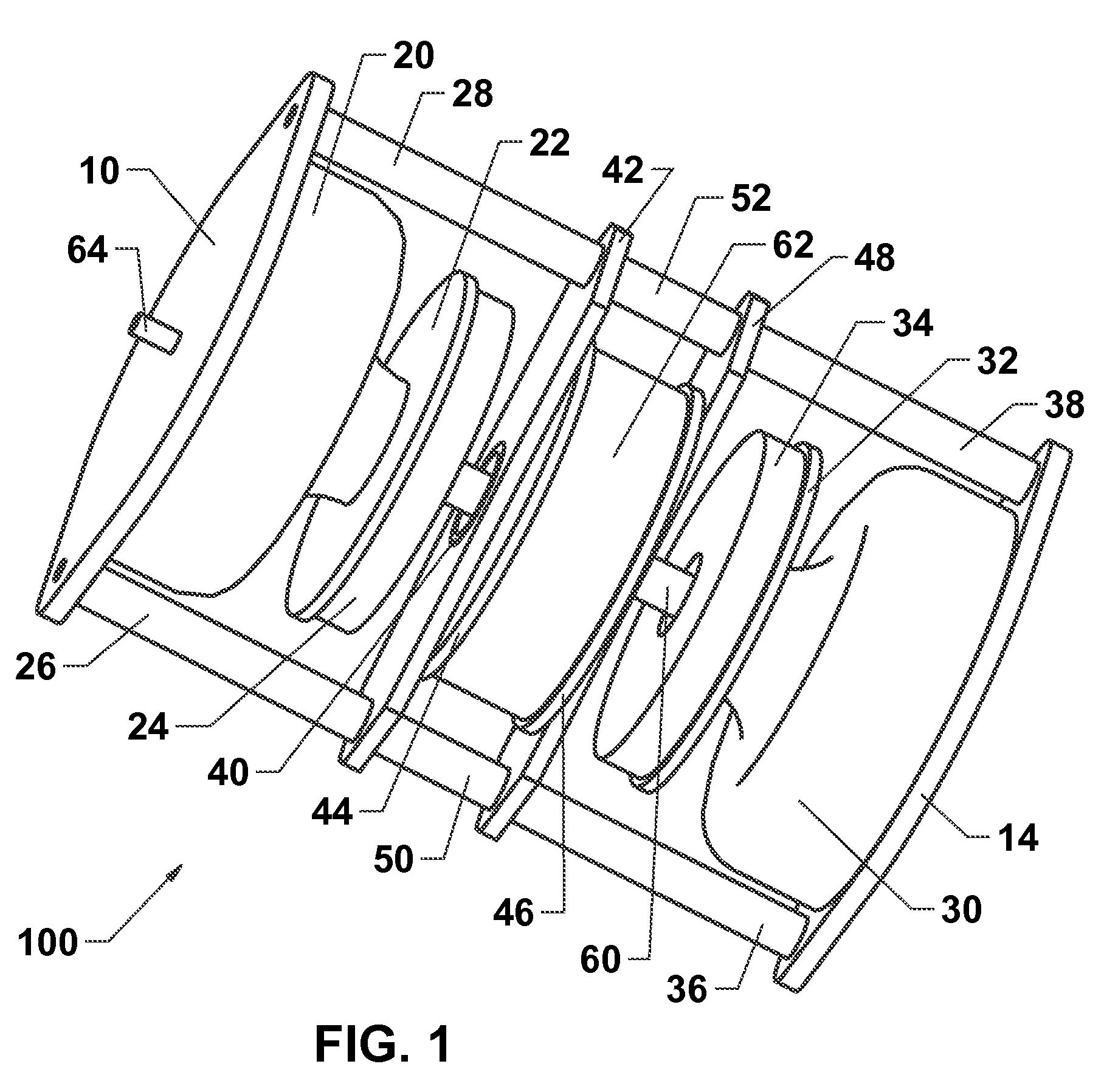Ear Canal Pressurization Device
a pressurizing device and ear canal technology, applied in vibration massage, application, diagnostic recording/measuring, etc., can solve the problems of system and misinterpretation, noise may be detected, and none of these systems meet all of the above stated requirements, so as to reduce the need for acoustical damping in the air line, the effect of unlimited and maintenance free life span
- Summary
- Abstract
- Description
- Claims
- Application Information
AI Technical Summary
Benefits of technology
Problems solved by technology
Method used
Image
Examples
Embodiment Construction
[0024]The preferred embodiment of the ear canal pressurization device 100 is shown in a perspective view in FIG. 1 and in a sectional view in FIG. 2.
[0025]The forcer assembly 108 (FIG. 6) is comprised of a first forcer assembly mounting bracket 42, a first forcer assembly washer 44, a forcer assembly core 40, a second forcer assembly washer 46, and a second forcer assembly mounting bracket 48. Said first and second forcer assembly mounting brackets are comprised of non-ferromagnetic material (e.g., plastic or aluminum) and, along with forcer assembly spacers 50 and 52, provide mounting for the forcer assembly. The forcer assembly core 40 is comprised of a rigid length of cylindrical, hollow, ferromagnetic material (e.g., iron) with inner diameter sufficiently large to allow a chamber link 60 to pass through without touching the forcer assembly core 40. Said forcer assembly core has a reduced diameter at one end to receive the first forcer assembly washer 44 and first forcer assembly...
PUM
 Login to View More
Login to View More Abstract
Description
Claims
Application Information
 Login to View More
Login to View More - R&D
- Intellectual Property
- Life Sciences
- Materials
- Tech Scout
- Unparalleled Data Quality
- Higher Quality Content
- 60% Fewer Hallucinations
Browse by: Latest US Patents, China's latest patents, Technical Efficacy Thesaurus, Application Domain, Technology Topic, Popular Technical Reports.
© 2025 PatSnap. All rights reserved.Legal|Privacy policy|Modern Slavery Act Transparency Statement|Sitemap|About US| Contact US: help@patsnap.com



